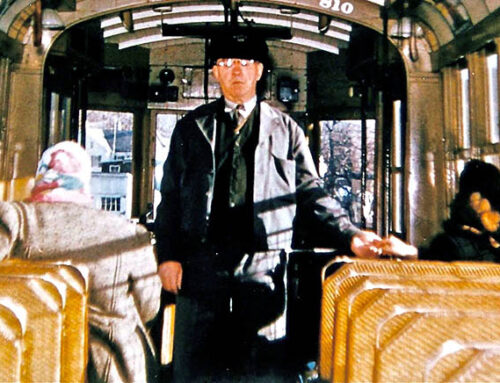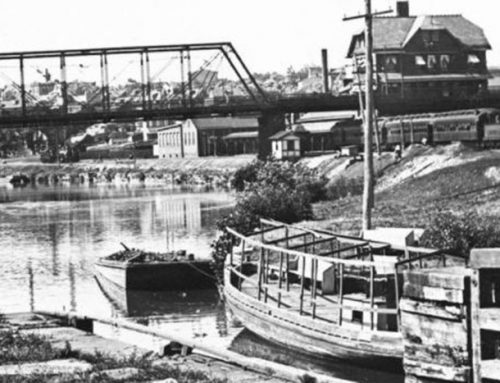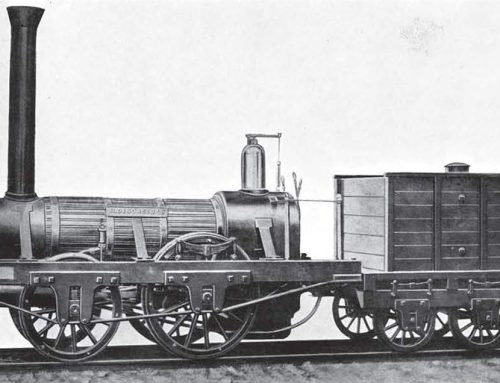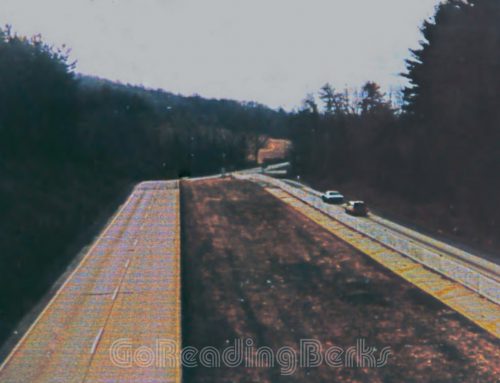Whander Field was an airport located in the field across Route 73 from the Schuylkill Valley High School. Whander field was developed as a true community project without any Federal or State subsidy. It was quite modest by today’s standards. It was little more than a 1,200-foot grass runway on bumpy, lumpy land along what is now Route 61 just south of Leesport. A swath of land had simply been cleared of weeds and bushes to provide the strip. It wasn’t even very level, but had a small knoll at about the three-quarter point that acted a bit like a launching ramp if the airplane had attained an airspeed at which it was inclined to fly by the time it arrived there. The field presented challenges to pilots because it was on rising terrain. To the west along the Pottsville Pike were telephone and electric wires and to the east were trees and the lake.

The name of the field was formed by the first letter of the last name of each of the men on the Chamber of Commerce aviation committee that organized the air field: W, John P. Wolfinger; H, Fred A. Howard; A, Arthur Arrowsmith; N, Hans Nolde; D, Harry Davis Jr.; E, Paul D. Edelman; and R, R.K.G. Rice.
Whander Field was dedicated on October 29, 1927 with an elaborate air program that drew more than 10,000 individuals to witness what was advertised as “Pennsylvania’s biggest air show.” The Army, Navy, and Marines sent a multitude of planes to the event. The Marines performed an aerial acrobatics show for the crowd, and Berks County received its first airmail. The mail originated from Des Moines, Iowa, and was flown from Philadelphia’s Pitcarin Field to Whander Field.
Vigilant, a baby blimp, came to Reading on August 17, 1929, from Aberdeen, MD, via Lancaster. First airship to land in Reading, large ads ran in the local papers by W. F. Price & Son, Goodyear distributors, generated a great deal of interest throughout the city. Though referred to as a “baby blimp,” it was 128 feet long and 37 feet in diameter. It arrived in the morning of the 17th at Whander Field. referred to in the newspapers as “Reading Municipal Airport.”

Even though Whander field was the first “official” airport in the area, there were several other fields around Reading which were visited frequently by the hosts of barnstormers who toured the country in the years following World War I. Among these was Madeira field, a mecca for barnstormers and stunt pilots, in Hyde Park, Muhlenberg Township, the County Home field near Shillington and a field not far from the Bingaman Street Bridge and to the north of Lancaster Avenue. However, Whander billed itself as the county’s first commercial airport. It was managed by Reading Airways, the first company in Pennsylvania to receive a charter for commercial flying.
The charter specified its purpose as maintaining and operating a commercial flying service and transporting freight, passengers, baggage and mail by airplane. It also was empowered to own and operate landing fields and hangars.
Seen in the 1930s, this Transcontinental Air Transport Ford 5-AT-B airliner, named City of Columbus, was fortunate to land at Whander Field. In April 1928, a 10-passenger Pitcarin K-78D plane aborted a landing at the airfield as hundreds of citizens anticipated the first such large aircraft landing, because the crew felt the field was “unsuitable.” The field became mostly unused 10 years after its initial opening before being reopened again in 1937. Eventually, Transcontinental Air Transport became Trans World Airlines (TWA).
Below: Transcontinental Air Transport Ford 5-AT-B airliner.

Below: Aerial Picture Service’s new Swallow OX-5 is shown at Whander Field in the 1930s. The company performed aerial photography and motion picture services in the area. It was mentioned in an October 2, 1926, Reading Times article when it took aerial photographs of the newly constructed Reading Hospital from 2,000 feet.

Reading Airways was a very successful venture during its early years, as reflected in the operating statement for the two month period from June 1, 1928 to July 31, 1929. During that period, the gross revenue from airplane operations amounted to $3,844.83. This revenue, according to the statement, came from 539 sight-seeing flights, special flights, long-distance flights, student courses and miscellaneous instruction. The airline offered the first commercial air links between Reading and the cities of New York and Pittsburgh, but schedules were erratic and the westbound flight frequently was terminated at Harrisburg due to bad weather over the Allegheny Mountains.
The following year, however, there were changes of names & ownerships.
Curtiss Airports Corporation was at that time interested in the purchasing and operating of various flying fields & companies.
Thus it was that Reading Airways sold its charter to Curtiss Airports Corporation, and Reading Airways came to be known as Eastern Air Transport, Inc.
Then on December 7, 1929, Eastern Air Transport sold its assets at Whander Field to William Ham & Adam Spatz.
Below: William Hain, left and Adam Spatz greet Amelia Earhart when she landed at Whander Field in Leesport in May 1931 to refuel on a cross country auto gyro flight.

Because the old Reading Airways name had disappeared when it was changed to Eastern Air Transport, it was possible for the new company to receive a charter under the name of Reading Airways.
The charter was received early in 1930.
Meanwhile, Eastern Air Transport had transferred its sphere of operation from Whander Field to the Atlantic Coast regions.
Some years later the operation of Whander Field was taken over by Richard Estler & Brooks McElroy.
Whander Field was evidently closed (for reasons unknown) at some point between 1942-43, as it was no longer depicted on the May 1943 NY Sectional Chart.
Whander Field was not depicted on the 1944 USGS topo map.
Whander Field was still operating for recreational flying maybe up until the 1960s. However, it was no longer depicted on aeronautical charts or topo maps from the 1950s/60s.
A piece of Berks County aviation history vanished in January with the demolition of the hangar of Whander Field. The hangar was built at a cost of $7,000. After the airport ceased operations, the building stood silently at the corner of Route 61 and Wiley’s Road, and in recent years had been all but overgrown by vines and brush. The hangar was demolished in January, 2020.
Below: A closeup from the 1937 aerial view looking west at Whander Field showing the hangar marked with “Reading PA” on its roof, and 2 smaller buildings on the west side.

Below: A closeup from the 1937 aerial view looking west at Whander Field showing the hangar marked with “Reading PA” on its roof, and 2 smaller buildings on the west side.

Below: A 2018 photo looking east showing the Whander Field hangar, located at Rt 61 and Wiley’s Road, more than 7 decades after the airport closed.

Below: A photo looking west showing the Whander Field hangar.










Leave A Comment